Art Critics Women Artists Art Exhibition 2024
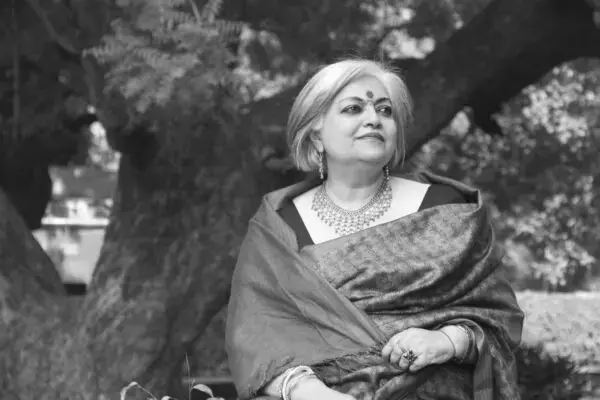
Dr Alka Pandy
Dr. Alka Pande is a renowned Indian art historian, curator, and author with a focus on gender identity, sexuality, and traditional arts. She has taught Indian Arts and Aesthetics at Panjab University for over a decade and has conducted postdoctoral research in critical art theory at Goldsmiths, University of London. Her contributions to the field have earned her numerous accolades, including the Knight of the Order of Arts and Letters by the French government in 2006, the Australian-India Council Special Award in 2009, and the L’Oreal Paris Femina Women under Design and Arts Award in 2015. In 2023, she received the CIMA Lifetime Achievement Award for her significant role in promoting Indian art.
Dr. Pande is the artistic director of Habitat Photosphere, a photography biennale at India Habitat Centre, and has curated numerous notable exhibitions both in India and internationally. Some of her key exhibitions include The Tree from the Seed at the Henie-Onstad Art Centre in Oslo, India Awakens Under the Banyan Tree at the Essl Museum in Vienna, and The Kama Sutra: Spirituality and Eroticism in Indian Art at the Pinacotheque, Paris. She has also been involved with the Bihar Museum Biennale and has contributed significantly to the documentation of India’s cultural heritage.
A prolific author, Dr. Pande has written and edited several influential books on Indian art and culture, such as Body Sutra (2019), Shringara (2011), and Kama Sutra – The Quest for Love (2008). She is also a curator at the Visual Arts Gallery, India Habitat Centre, New Delhi.
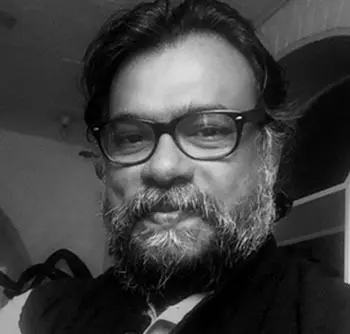
Johny ML
Johny ML is an Indian culture critic, art curator, writer, and translator based in New Delhi. With three post-graduate degrees, he has contributed to prominent magazines such as Stance Magazine, Art Tehelka, and Matters of Art. He was the chief curator of the first United Art Fair in 2012 and has curated numerous art exhibitions throughout his career, including Dreams: Projects Unrealised (2003) and Thekkan Kaattu (2011).
Johny has authored several books, including By All Means Necessary (a collection of essays), The Circle of Life – the Art of Siddharth, and K.S. Radhakrishnan (co-authored with R. Sivakumar). He has also translated several international bestsellers into Malayalam, such as Mistress by Anita Nair, Eleven Minutes by Paulo Coelho, and Embers by Sandor Marai.
In addition to his writing and curatorial work, Johny has directed three documentaries on Indian artists: Jeram Patel, N. N. Rimzon, and Sanjeev Sinha. His writings on art, culture, and politics have been published in major print magazines and newspapers, both in English and Malayalam. Known for his diverse roles as a writer, curator, translator, and critic, Johny ML remains a prominent figure in India’s contemporary art and literary scenes.
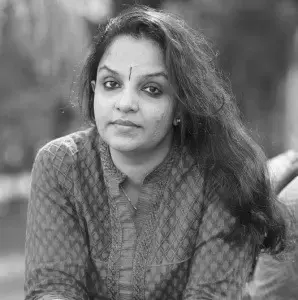
Dr. Kavitha Balakrishnan
Dr. Kavitha Balakrishnan is an art critic, poet, contemporary art researcher, and painter based in Kerala, India. She is currently a lecturer in Art History and Aesthetics at the Government College of Fine Arts in Thrissur. Kavitha completed her M.A. in Art History and Aesthetics from Maharaja Sayajirao University, Baroda, in 1998, and earned her Ph.D. from Mahatma Gandhi University in 2007 for her thesis on the discourse of illustration in Malayalam periodicals.
Kavitha’s career spans academia, publishing, and curatorial work. She has written extensively on contemporary art, particularly on the evolution of art practices in Kerala, and has contributed to leading art magazines like Marg, Art&Deal, and TAKE on Art. Her research on illustration in Indian art, especially Kerala, gained international recognition with her article published in the Journal of Illustration.
Her first book, Artek Anubhavangal (2003), reflects on her experience at the Artek International Young Pioneer Camp in the former Soviet Union. She has authored several other books on art and poetry, including Keralathile Chitrakalayude Vartamanam (2007), which won the Kerala State Award for Best Book on Art. Kavitha has curated exhibitions and coordinated creative collaborations between artists and poets in both India and abroad, highlighting the international exchange of art and literature.
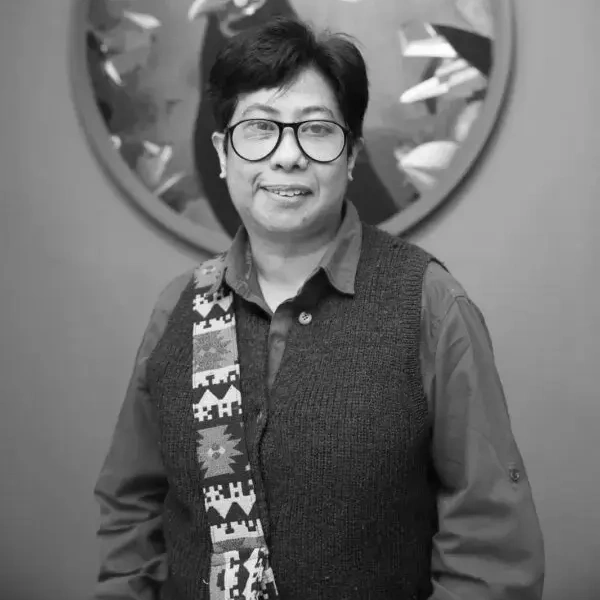
Georgina Maddox
Georgina Maddox is a Delhi-based journalist, creative writer, visual artist, and activist with over 18 years of experience in Indian art and culture. She covers art for publications such as STIR World, MASH Take on Art, Art India, The Hindu, The Indian Express, and Outlook magazine. Maddox is also a regular contributor to Architectural Digest and has written extensively on immersive art. As a curator, she has worked with artists like Sunil Padwal, Shilpa Gupta, and Saba Hasan, and penned catalog essays for their exhibitions.
In addition to her writing and curatorial work, Maddox has co-produced two short films: Bombay Longing with Shalini Kantaya and No Fixed Address with artist Tejal Shah. Her essay “Challenging the Hetero-norm in Art,” exploring the works of Bhupen Khakhar and Amrita Sher-Gil, was published in The Phobic and the Erotic: The Politics of Sexualities in Contemporary India, edited by Brinda Bose and Subhabrata Bhattacharyya.
Maddox’s activism is also a significant part of her identity. She actively supports queer, women’s, and minority rights, often participating in protests. Her work extends beyond art into fiction, with ongoing writing projects. Passionate about fostering queer expression, she is devoted to Scripts, a zine by LBT women, which encourages creative contributions from the queer community.
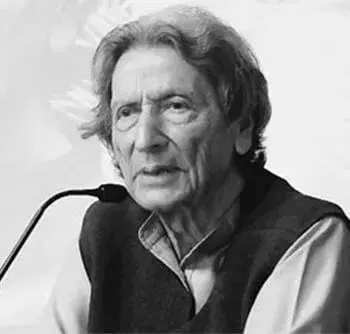
Keshav Malik
Keshav Malik was an Indian poet, art critic, scholar, and curator. Known for his work as an art critic for The Hindustan Times (1960–1972) and The Times of India (1975–2000), he made significant contributions to literature and art criticism in India. He published 18 volumes of poetry, including The Lake Surface and Other Poems and Storm Warning, and edited six anthologies of English translations of Indian poetry.
Malik co-founded the Poetry Society of India and served as president of the Poetry Club of India. He was also an advisor to the National Gallery of Modern Art and an executive board member of the Lalit Kala Akademi. His curatorial work included the 1973–74 exhibition The Human Condition, which toured Europe, and he remained a prominent figure in India’s art scene throughout his career.
In recognition of his contributions to literature, Malik was awarded the Padma Shri in 1991. He also wrote Attars of Existence, focusing on the abstract works of artist Sudip Roy, and was the subject of two documentaries. Malik’s legacy includes his influence on Indian poetry, art criticism, and modern art exhibitions. He passed away in New Delhi in 2014 at the age of 89, survived by his wife, Usha.
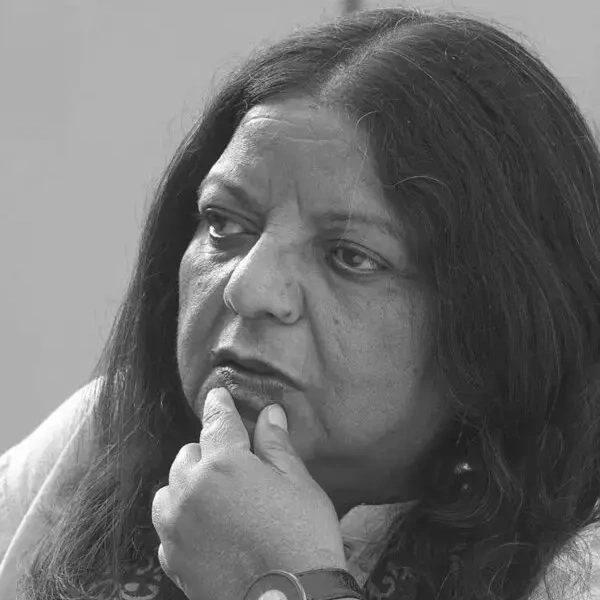
Nirupama Dutt
Nirupama Dutt is an Indian poet, journalist, and translator who writes in Punjabi and translates her poetry into English. With over forty years of experience in journalism, she has worked with leading Indian newspapers and journals. Dutt is known for her biography of Dalit icon Bant Singh, The Ballad of Bant Singh: A Qissa of Courage, and her translations of Punjab’s Dalit revolutionary poet Lal Singh Dil’s works in Poet of the Revolution: The Memoirs and Poems of Lal Singh Dil.
Dutt’s poetry collection, Ik Nadi Sanwali Jahi (A Stream Somewhat Dark), won the Punjabi Academy Award in 2000. Her work has been translated into English, Hindi, Kannada, Bengali, and Urdu, and she co-edited the SAARC poetry anthology Our Voices in 2004. She has also translated Pluto, a collection of short poems by Gulzar, and Stories of the Soil, a volume of 41 Punjabi stories.
As a journalist, Dutt is known for her secularist stance and has written extensively on topics such as terrorism in Punjab, the 1984 Sikh massacre, and communal violence. Her poetry has been featured on Poetry Web International.
Dutt is the convener of a women’s study group, Hamshira, and currently lives and writes in Chandigarh.
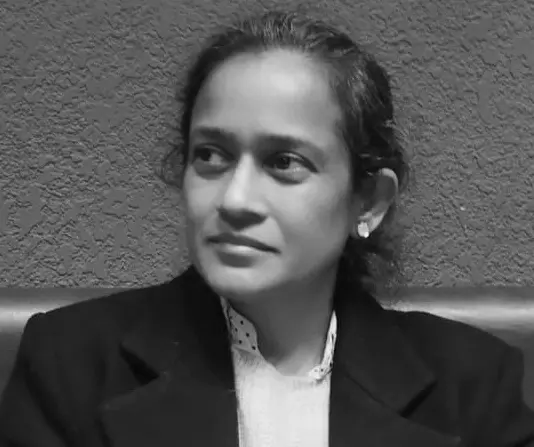
Archana Khare-Ghose
Archana Khare-Ghose
New Voices For a New Age
Having spent the better part of my career as an arts journalist covering the masters of modern Indian art — when quite a few of them were also around and active such as S. H. Raza, M. F. Husain, Jehangir Sabavala, Ram Kumar, and Akbar Padamsee to name some, with whom I had multiple opportunities to interact — one thing that always left me wondering was the brilliance and the foresight of the people who discovered them as young painters and saw their potential to reach unprecedented heights, decades before they actually became huge stars.
After all, it is one thing for an artist to be sure of their art and skill, but quite another for someone else to have the same faith in the art of that artist, perhaps even more than the artist himself/ herself. That’s the kind of faith that Jewish emigrés in Bombay during the World War II, critic Rudy von Leyden (1908-1983) and artist Walter Langhammer (1905-1977), put in the talent of K. H. Ara (1914-1985), who used to actually clean cars to make a living. It was the same Ara who went on to become a founding member of the Progressive Artists’ Group, initiated by F. N. Souza in 1947, and carved a place for himself in the universe of Indian modernism.
This is where I feel totally in awe of organisations, institutions and individuals that in their own way spot and promote young talent, showing faith in the calibre of artists not yet discovered by the wider world, and giving them a platform that will be of far greater service to their confidence to move forward than any number of lakhs and crores in later years.
A Special Platform
As I browse through the works selected for the Artscapes 2025 exhibition, I get goosebumps and the same sense of wonder that I have always felt — here is another of those rare moments when faith is being put on artists whose careers will take on a different hue post this exhibition. Whether they ultimately achieve what they are setting out to, is in the realm of future, but this group of artists has been given a great platform, courtesy Artscapes, that will definitely add heft to their experience and stand them in good stead as a building block of their professional life.
This is the 11th Annual All Women Artists Contemporary Art Exhibition, to be held at the Punjab Kala Bhawan in Chandigarh. The very fact that the exhibition is in its 11th year is a testament to the success of the concept, and to the perceptive and fruitful organising skills and perseverance of Suraj Mukhi Sharma and Simrat Bhullar Sharma. It began as a national exhibition but with entries coming from beyond India’s borders, it expanded on its own, organically, testifying to the popularity of the initiative with artists from far and wide.
Seeking validation is an innate aspect of human psyche, and therefore, no matter how confident a young artist is about their work, they would always seek acceptance, applause and approval from the larger society. This is where platforms such as Artscapes assume significance, because by choosing artists for their annual exhibition on the basis of merit, they provide them the much needed public recognition, a reaffirmation in their talent, a stepping stone to other varied achievements in public sphere.
Art Trends
The exhibitions such as the upcoming 11th Annual All Women Artists Contemporary Art Exhibition, by virtue of their nature and composition, become a crucible for spotting the most current trends in contemporary art, almost like a pointer to the direction that art is going to take in near future. The most heartening aspect of this selection is the range of geographical diversity that it represents. There is hardly a part of India that has not found representation in the list of selected artists.
It is indeed heartwarming that artists from non-traditional art centres have found space in this exclusive selection, pointing to the broadening of the aesthetics of modern Indian art beyond the metropolitan cities. Alongside artists from New Delhi, Mumbai, Kolkata, Bengaluru, and Pune, are featured artists from Tier II and Tier III cities (and even much smaller centres) such as Chandigarh, Bhopal, Agra, Jodhpur, Jaipur, Lucknow, Kolhapur, Surat, Mathura, Patiala, Thrissur, Panipat, Ambala, Aurangabad, Imphal, Tiruvannamalai, Ernakulum, among several others. This points to increased acceptance of the arts in the country in general and enhanced infrastructure as well for them to be able to pursue it professionally.
Participants from California, Dubai, and Katowice in Poland attest to the international appeal of the exhibition.
Apart from the geographical diversity, it’s the sheer range of mediums, genres and styles on offer that mesmerises. Women artists — both professionals and students — are truly pushing the envelope of modern art as is amply evident through the works on display. Perfected skill sets are an established fact in all the selected works as is the control over line, medium and the contours of the subject. What is worth noting is the treatment of the subject through a cutting-edge vocabulary, which shows that the artists have tried hard to think out-of-the-box and create something new, something original.
Even though some works evoke the well-known stylistic languages of modernist and post-modernist art of the previous century, it cannot be helped as modernism is still not dead, and post-modernism continues to segue itself with contemporary art. Conceptual, socially-engaging and tech-driven art — even post-internet art — is the most prominent trend in the world of art today, of which we some good examples in this selection. I shy away from taking names of only a few artists in a group comprising multiple great works but cannot help and point out a few examples for the benefit of the readers. Astha Tiwari’s Trapped, for instance, is a comment on the boxed lives of our times, whereas Greeshma C’s Continuum 30 makes a strong statement on the lives of women. Babita Das’ Together Is Strength uses a forceful abstractionist language, while Bharti Kaushik’s Sangharsh deftly uses the metaphor of knitting needles and balls of wool to speak of internal struggles that the owner of those things may endure. Gomathi Sivasubramanian’s The Met is a postmodernist eye on the stillness of a museum alive with art admirers engaging with works of art. Gunjan Dhillon’s endearing woodcut on paper, Mother and Child, is evocative of the woodcuts of the previous century, most notably Chittaprosad. Naina Somani’s woodcut on canvas, Fish Light Dinner, presents a harmonious blend of the technique with the genre of surrealism. The list can go on, and in fact, must go on, because even those who have not been mentioned here have presented works that exude serious thought and dexterous application of that thought.
A word on the materiality explored in the exhibition as well… In an age when boundaries have been pushed in terms of what constitutes the medium of art, its reassuring to see artists investing innovation in traditional mediums such as painting on canvas and paper, woodcuts, ceramics, photography, stone and stoneware, terracotta, brass, fiberglass, and more.
All About Women
One word about the relevance of an exhibition only comprising women. Many women artists, most notably veteran artist Anjolie Ela Menon, have spoken in public against being classified as ‘a woman artist’, with the refrain that male artists are never referred to as ‘a man artist.’ Menon has a point. In all fields of life, true equality between the genders would be reached only when the need to give a special category to women will cease to exist. But just as in society in general, so as in arts, it’s a male dominated world. Dynamics have been changing, and at a pretty rapid pace in the past few decades, but we are far from being an equal society. In fact, women continue to be vulnerable to extraneous forces inherent in a male-dominated world, even if they have successfully breached glass ceilings. The equality is missing from the art world too even though it may fare better than most other walks of life in terms of opportunities, acceptance, and male attitude. That is why, women artists still need this special support because the universe of art is only one aspect of their lives; there are other aspects that still need a lot of catching up to do and have a direct bearing on the artistic practice of women.
By giving women artists this exclusive platform, Artscapes is providing them a much-needed stepping stone, a sort of paternal hand behind their back, to go out and claim their place fearlessly. It will go a long way in imbuing them with confidence to do what they want to do with their creativity.
I extend the selected artists and the organisers the very best wishes, not just for this edition of the exhibition but for all their future endeavours. Hopefully, for all of them, this will be an association that will always carry a lingering fragrance of new, fruitful beginnings, whichever path they choose to walk on in the years ahead.
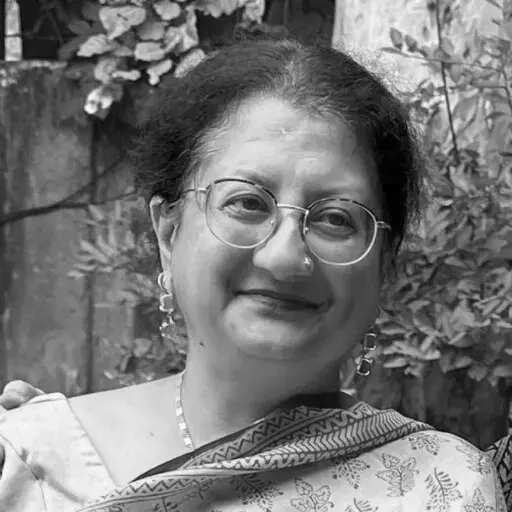
Prof Seema Bawa
Dr. Seema Bawa is an Associate Professor in the Department of History at Sri Aurobindo College, Delhi University, specializing in South Asian art and culture. She has lectured widely in India and internationally, focusing on Indian art, architecture, and iconography. Her research covers a range of topics, including ancient Indian art, Western Himalayan art, and contemporary Indian art. She has published notable books such as Religion and Art of the Chamba Valley and Gods, Men and Women: Gender and Sexuality in Early Indian Art. She was awarded the DAAD Fellowship to study at the University of Bonn.
Dr. Bawa’s work delves into the intersections of religion, gender, and art in early India. She has recently researched the narrative depictions of the Ramayana and visual hagiographies of Ganchi. Currently, she is investigating Gupta and Post-Gupta Shaivism in Northern India, with a focus on image-text studies and the evolution of Shaiva pilgrimage networks.
An influential voice in contemporary art, Dr. Bawa writes for newspapers and specialized journals, and has curated exhibitions such as Shatadru: Feminine Sensibilities in Indian Art at Lalit Kala Akademi. She has also edited the art journal ARTimes. Her intellectual contributions span academic research, art criticism, exhibition curation, and popular cultural discourse, bridging ancient Indian traditions with modern art practices.
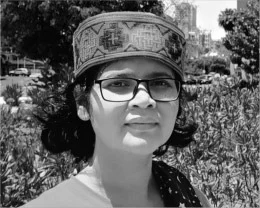
Dr. Rajashree Biswal
Dr. Rajashree Biswal is an art historian, artist, and curator from Odisha with over two decades of experience in art research, curation, writing, and education. She is the Founder and Artistic Director of New Bridge India, a non-profit cultural initiative. Dr. Biswal holds a PhD from Jawaharlal Nehru University (JNU) in New Delhi, where she specialized in contemporary community-based art practices in India. Her work focuses on the intersection of art, culture, and social issues, particularly concerning indigenous communities.
Dr. Biswal’s career began in agricultural engineering, but her passion for cultural engagement led her to pursue a Master’s in Visual Arts from M.S. University, Vadodara, in 2004. Her socio-political interests and fieldwork with indigenous women in Madhya Pradesh and Odisha inspired her shift to art history. She has received numerous fellowships, including a Fulbright Postdoctoral Fellowship at the University of California, San Diego, and has published extensively on Indian art in national and international journals.
Her curatorial projects, such as Vortex (2003), Towards a New Viewership (2008-2009), and Contemporary Art, Viewership and Meaning (2017), address the gap between the art world and the public. Dr. Biswal also emphasizes the importance of visual literacy, particularly among the younger generation. Currently, she is researching community-based art in the USA and continues to promote cultural exchange between India and the United States.
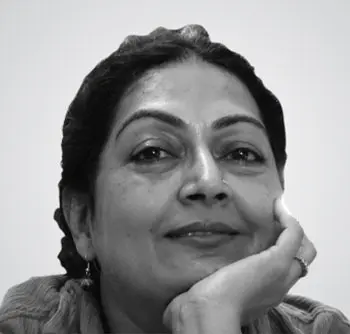
Dr. Vandana Shukla
Dr. Vandana Shukla is a prominent art historian, educator, and curator known for her contributions to the field of contemporary Indian art. With a PhD in Art History, she specializes in the intersection of traditional and modern art practices in India, with a particular focus on the evolution of visual culture. Dr. Shukla has been an influential voice in promoting contemporary Indian art both within India and internationally.
Her scholarly work explores the role of art in societal transformation and cultural exchange. As a curator, she has organized several significant exhibitions, showcasing the work of both emerging and established artists. Dr. Shukla’s expertise extends to art criticism, and she has contributed extensively to leading art journals and publications, highlighting the diversity of contemporary art practices.
In addition to her curatorial and research endeavors, Dr. Shukla is an active educator, imparting her knowledge to the next generation of art historians and curators. Her academic and curatorial work seeks to bridge the gap between historical traditions and contemporary artistic expressions, fostering a deeper understanding of Indian art’s evolving narrative.
Dr. Shukla’s contributions continue to inspire and shape the discourse around art in India, making her a key figure in the country’s artistic and academic communities.
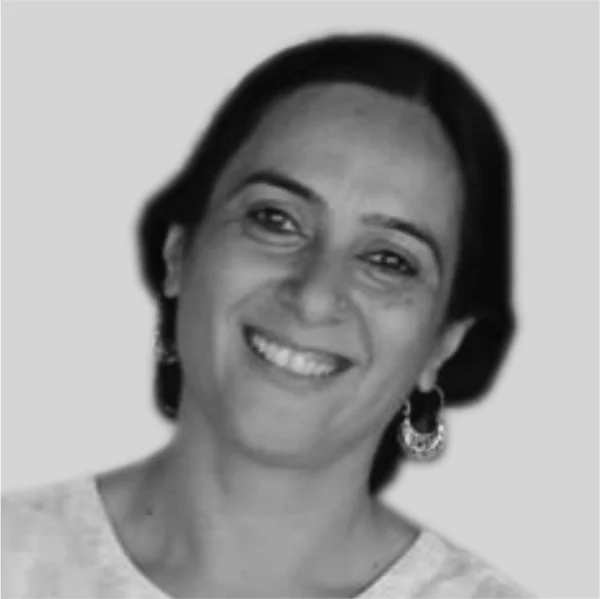
Parul
Parul is a senior journalist with over 20 years of experience at The Indian Express, a leading Indian national daily. As a writer, editor, and rewrite specialist, she has carved a niche in covering the arts, including visual art, theatre, and literature, for both the national and local pages of the newspaper. Her in-depth reporting and thoughtful analysis have illuminated the vibrant cultural landscape of India, earning her recognition as a trusted voice in arts journalism.
Beyond her journalistic work, Parul is passionate about fostering creativity and education. She shares her journey of personal and professional growth through teaching, with a particular focus on educational programs run by NGOs. By mentoring aspiring artists and writers, she helps bridge the gap between traditional storytelling and contemporary art forms. Parul’s unique perspective combines a deep appreciation for the arts with a commitment to nurturing emerging talent, making her a valuable advocate for cultural and creative expression.